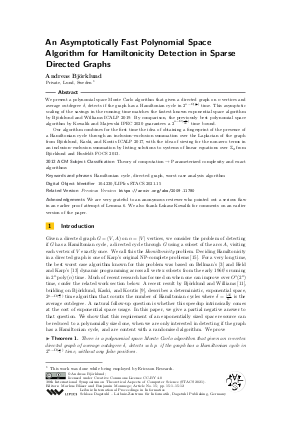LIPIcs.STACS.2021.15.pdf
- Filesize: 0.68 MB
- 12 pages

 Creative Commons Attribution 4.0 International license
Creative Commons Attribution 4.0 International license









Feedback for Dagstuhl Publishing